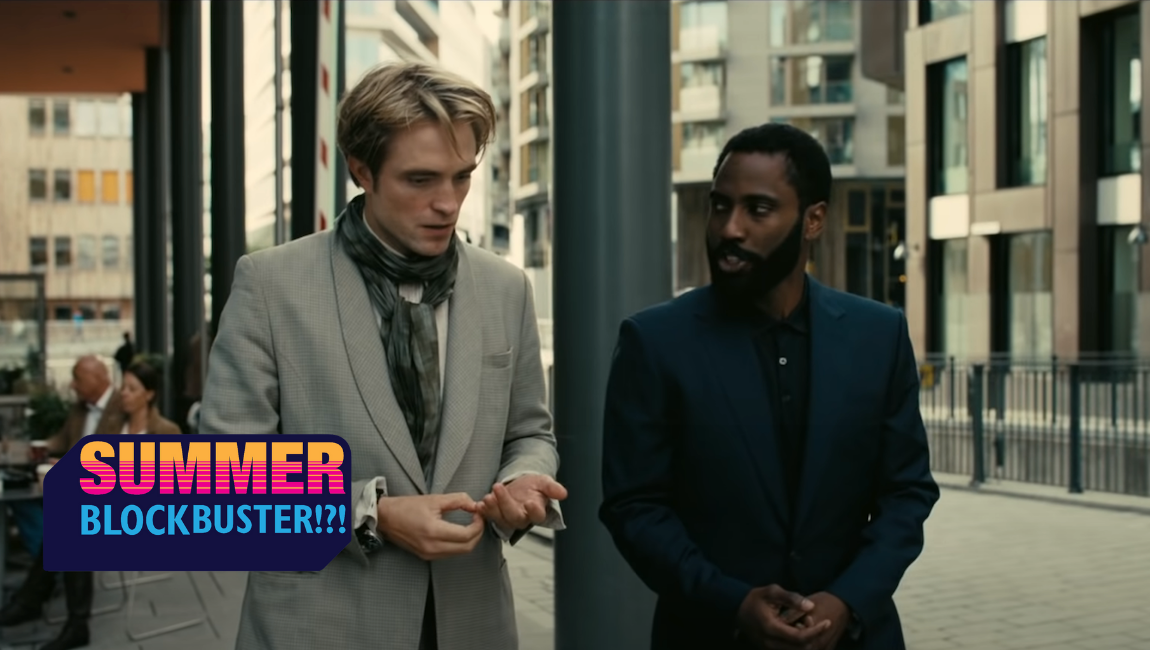One of the many privileges of attending a film festival lies in watching the programs of shorts, cleverly curated such that one does not take longer to find their seat than watch the movies, but also brief enough to, well, earn the distinction. While narrative shorts can cynically serve as pitches to potential investors in the audience, the documentary short is thankfully useless as a demo reel, its subjects hardly ever marketable. Think of Les Blank’s 31-minute Gap Toothed Women, where the subject is mesmerizing, almost perfect in Blank’s frame, but hardly a call-to-action affair for HBO nor of murderous intrigue for Netflix. In this undemanding environment — in which audiences are asked for a mere five-to-forty minutes of their lives, and where the budget sits closer to zero than it does the price tags of its narrative cousins — films can pretend to be an artform free of the constraints of the budgeteer and the marketing department. Of course, that’s not exactly true, but shorts screenings tend to be the only screenings at your average film festival in which audiences don’t look for the qualities that money can buy. An interesting subject or, to those who care about such things, an interesting form can make or break these pensées. This invites many half-finished thoughts and boring copycats to crowd these spaces — for instance, an entire genre that this writer and his friends refer to as “vacation films,” in which the filmmaker shoots a foreign, perhaps “exotic,” land in shaky 16mm and overlays the footage as a series of dissolves. It also invites, however, the potential for honest-to-god new images. Or, if one’s luck holds up, the film, born in the documentary shorts realm where anything is possible, may also be funny. Cinéma du Réel’s program this year played host to a little of everything.
Piblokto, an anthropological documentary from Anastasia Subina and Timofey Glinin, sticks close to the techniques and images one may expect from its category, following a fringe community who live much different lives than those of their Western counterparts. Here, near the Arctic region of Chukotka (Eastern Siberia), groups of families work together to beach and disembowel the blubbery massive whale that will later serve as food, oil, and raw material for the whole village. They chant while human-sized organs and viscera spill to the side, and the pink, jiggly carcass presents itself as a stable deposit for local dogs’ licking. The villagers swap horror stories about just how easy it is to lose fingers or die by wrangling whales or walruses; one leads us to a grave and meditates on the drunken nights that he spent with his lost friend. Subina and Glinin, both anthropologists, steer the film away from the habits of older anthropological filmmakers such as Timothy Asch or Robert Gardner; instead of using voiceover or text to explain the habits, rituals, and hierarchies of these Ahabs and Ishmaels, they opt for one filmed event — the whale carving — to serve as a key image for the village’s casual relationship with death. We do not learn much about these people, at least not in any scholarly way, nor do the directors focus completely on the audio-visual experience of being there, as the Sensory Ethnography Lab’s alumni might. But Piblokto does capture the imagistic majesty of an infinite horizon that meets the sea as the village’s young boys mount dog sleds and surf the grass and stone and arid fields. It’s thanks to this landscape that one might better understand a culture birthed from flatness, similar to the Indigenous peoples of the Great Plains, where a sort of stable madness (”piblokto” being a controversial medical anthropology term for “arctic madness”) is brought on by consuming nautical mammal livers that prepare a person for their own time as a carcass.
Sitting somewhere between an informative documentary and something more experimental, Quentin Papapietro’s Saintonge giratoire focuses on both the titular giratoire’s (roundabout) French origins and the titular Saintonge’s record-breaking number of them. Papapietro opens his film with a quick zoom, the universal piece of cinema grammar that, here, at least, tells us not to take things too seriously. Indeed, after Papatrieto’s narrator (Eugène Green!) points out the most obvious example of the roundabout being ontologically French — L’Arc de Triomphe — the film charges into a structuralist mode, but casually so, as the camera makes a complete orbit around a roundabout, then cuts to the next, then the next, with other shots (of architecture, snails, and the surrounding landscapes of Saintonge) interrupting only when the narration demands it. However, you can’t shoot roundabouts if you’re driving over them; instead, Papapietro’s camera captures the sculptures at the center of each roundabout, showing a city (or at least one artist) with a sense of humor and whimsy. There’s no big reveal about the roundabouts, but the artist behind the sculptures — a snail, grapes, villagers — does reveal that he makes them out of foam to protect drunk drivers. Unlike Piblokto, Saintonge giratoire wants you to learn something, if only to appreciate those little circular paths. Traversing a circle is a holy act, like spinning around a Maypole or walking the destinationless journey that only a circle can accommodate, in order to move deeper and deeper into a trance-like thought. Papapietro himself brings up Stonehenge as the original roundabout in a cheeky half-joke. This levity and humor in the narration (with plenty of cheesy camera moves to punctuate the asides) works well here, possibly because Luc Moullet’s voice suddenly takes over halfway through, adding his signature sly sarcasm to the mix. Papapietro’s film follows from Moullet’s style and legacy, proving that experimental documentary can be smart, austere, playful, and that ever-missing quality in today’s arts: funny.
The most experimental of this bunch, Pablo Mazzolo’s The Newest Olds, is not very funny, much to our collective dismay, but it’s still fun to look at. Mazzolo’s works generally follow the structure of those dire “vacation films,” though they manage to escape the clutches of mediocrity by way of Mazzolo’s light collages. Every shot in this latest work lacks white space, as Mazzolo stacks his layers of film until the image becomes a moving fractal. In his previous effort, Green Ash (2019), the director used a similar technique on a pattern as loud and bright as grass and shrubbery, giving a disorienting movement effect akin to psychedelic tracers. But here, Mazzolo captures cinematic landscapes of Detroit and neighboring Windsor, Ontario — they still move, thanks to the hand-cranking of his 16 and 35 mm cameras, but the illusion is a flickering and fluttering of light on the windows such that America’s forgotten city comes alive. A few other shots capture the rivers and greenery nearby, but audio samples of recorded voices hint that they, much like the city itself, are poisoned. Mazzolo doesn’t complicate it further; this political narrative is simply one more layer. Much like Piblokto and Saintonge giratoire, The Newest Olds is a portrait of a particular place, and each one, no matter how simple or experimental in form, allows the land, natural or paved, to guide them.
Published as part of InRO Weekly — Volume 1, Issue 14.







